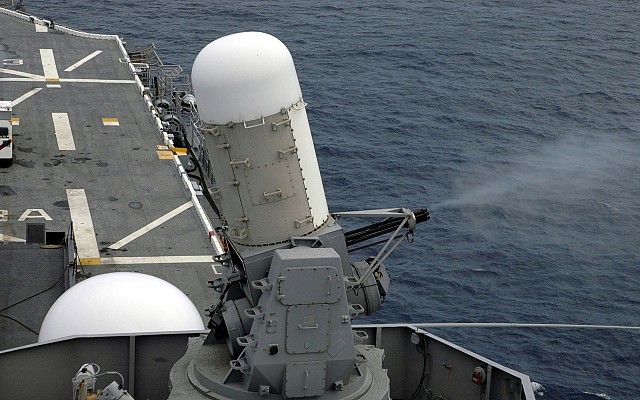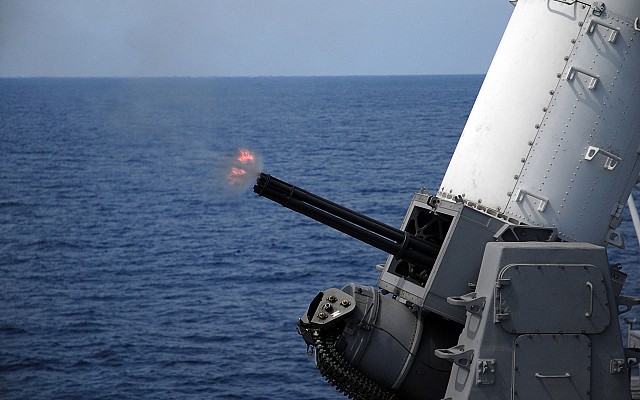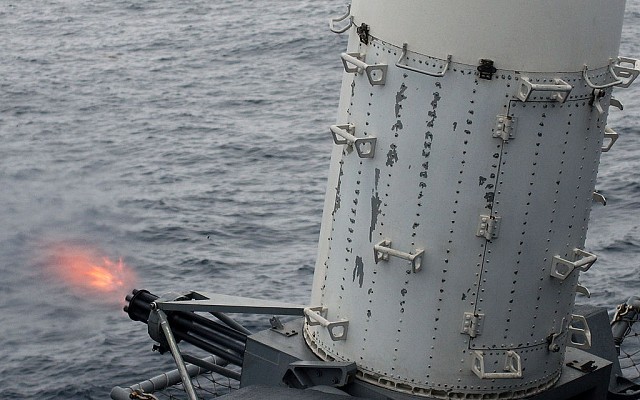20mm Mk 15 Phalanx
Overview
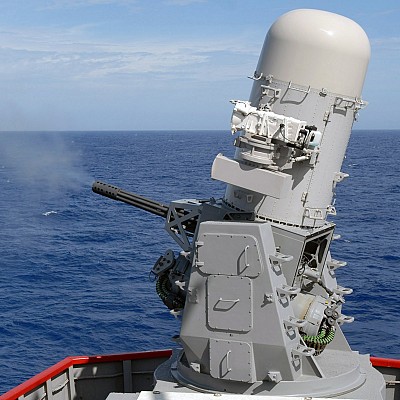
20mm Phalanx Block 1B
20mm Phalanx Block 1B close in weapon system firing during an exercise. Note the FLIR system on the left of the search radar housing.
Source: US Navy -
© Public domain
1978 - present (series production)
Japan
United Kingdom
Description
Introduction
The Phalanx is a late Cold War era CIWS system of US origin. It was developed as a last ditch system to protect against anti-ship missiles. Alternatively, it can be used against nearby aircraft and helicopters.
Design
The Phalanx is based around a single 20mm M61 Vulcan rotary cannon. Acquisition radar and fire control radar are fitted on top of the Vulcan in a large dustbin-shaped cylinder. Later models add a FLIR optronics suite which allows for remote manual control against surface targets. Compared to other CIWS with on mount radar systems the Phalanx has a limited weight and is quite easy to integrate.
Firepower
Armament of the Phalanx consists of the 20mm M61 rotary barrel autocannon, which is also used in various US fighter aircraft. Armor piercing rounds with tungsten or depleted uranium rounds are used. A total of 989 (early) or 1.500 (late) rounds are in the linkless feed system. Early models have a 3.000 rpm rate of fire. This is increased in the latest models tot 4.500 rpm. Effective range against missiles is 1 to 1.5 km. Manual guidance against land based or floating targets is effective up to 3.5 km.
Users
The Phalanx is one of the most widely used CIWS systems, both in production number and number of end users.
Variants
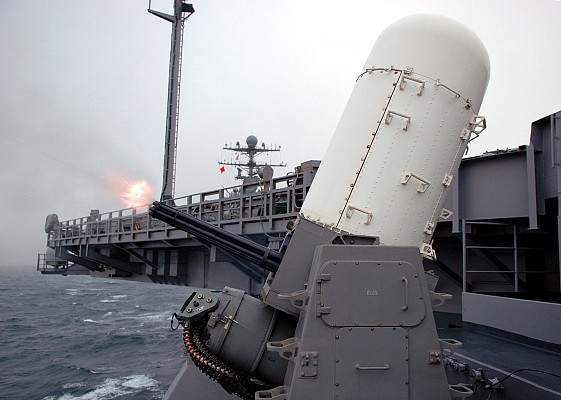
20mm Phalanx Block 1A
20mm Phalanx close in weapon system firing during an exercise.
Source: US Navy -
© Public domain
List of variants
Details
Media
Related articles
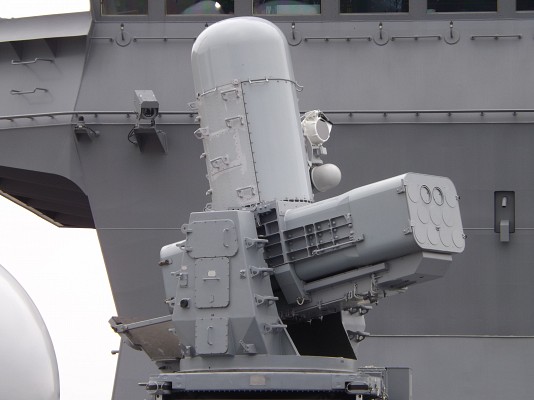
SeaRAM
SeaRAM is a close-in weapon system using missiles instead of an autocannon. It is based on the same mount and radar suite as the Phalanx.
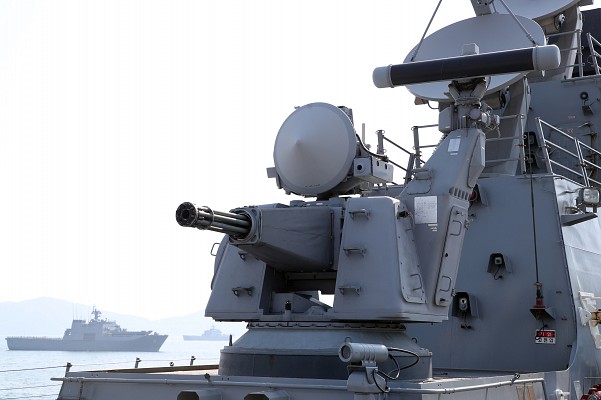
30mm Goalkeeper
The Phalanx is a smaller and easier to integrate CIWS compared to other NATO systems, such as the Goalkeeper.
